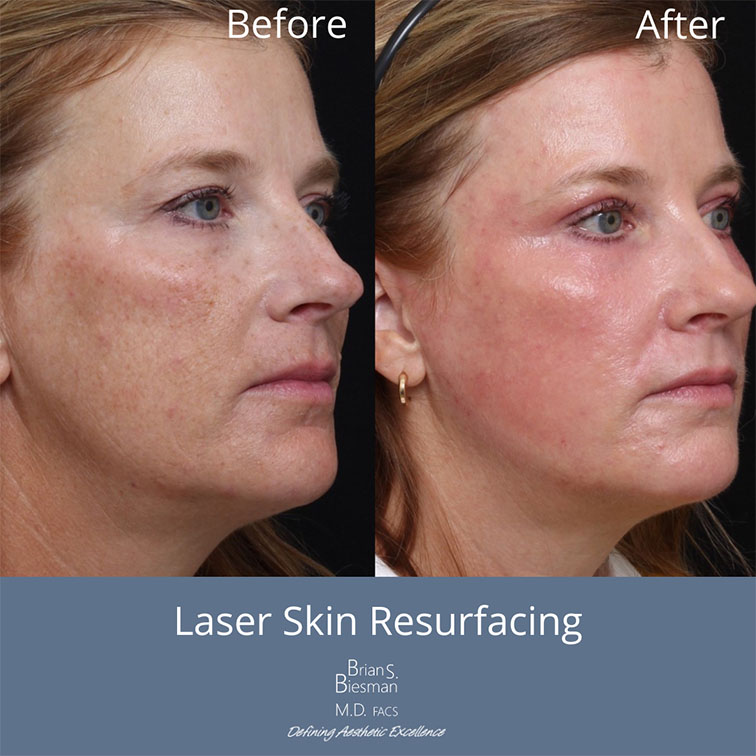Over time, environmental and sun exposure can lead to our skin to lose its youthful glow. Common changes include brown discoloration, red discoloration, and the development of “sun spots”. These changes can occur on our face, chest, back, arms, legs, and other sun exposed areas. Using a laser or pulsed light technology, we can help you restore your skin to a healthier, fresher appearance.
Many of our patient’s main concern is of unwanted brown spots on their face, hands, arms, legs and back. Some of these spots are darker in color while others are lighter. It is always important to make certain that a brown spot does not pose a threat to your health so occasionally Dr. Biesman or his staff may suggest testing a suspicious appearing spot by performing a biopsy.When treating brown spots that are not dangerous but simply unsightly, topical agents such as bleaching or fading creams alone typically are not effective in producing significant lightening of brown spots. Lasers and light devices remain the treatment of choice for brown spots. Q switched lasers are special lasers designed to treat unwanted color in the skin. Examples of the types of conditions treated by Q-switched lasers include brown spots caused by aging or sun damage, some birthmarks and tattoos. Q-switched lasers can also be used in some situations to treat “blood staining,” the brown discoloration of the skin that can be left behind after a bruise resolves, dark circles under the eyes, and, in select cases, melasma. Anesthesia is not required when Q-switched lasers are used to treat unwanted brown spots. Following Q-switched laser treatment the skin may be rough and crusted for up to 2 weeks. Brown spots typically resolve after 2-3 Q-switched laser treatments. When there are many brown spots over a large area, treatment of the entire region with intense pulsed light (IPL) may be recommended. Ironically, the darker the spot, the easier it is to remove with lasers. If there is very little contrast between the unwanted spot and the underlying skin color, removal of the undesired sun spots can be more challenging. In these situations, resurfacing lasers can be required in order to obtain best results.
Quick Facts:
- Q-switched lasers are ideally suited to target unwanted brown spots
- Intense pulsed light (IPL) may be used to treat large areas which contain numerous sun spots
- 1-3 treatment sessions are typically required with treatments spaced 4-6 weeks apart
- The treated area may crust and peel over a period of 7-14 days
- Brown spots that may represent moles or other conditions that have the potential to grow are generally not treated with lasers
- If a spot that has been treated by a Q-switched laser returns at some point in the future, biopsy may be indicated.
